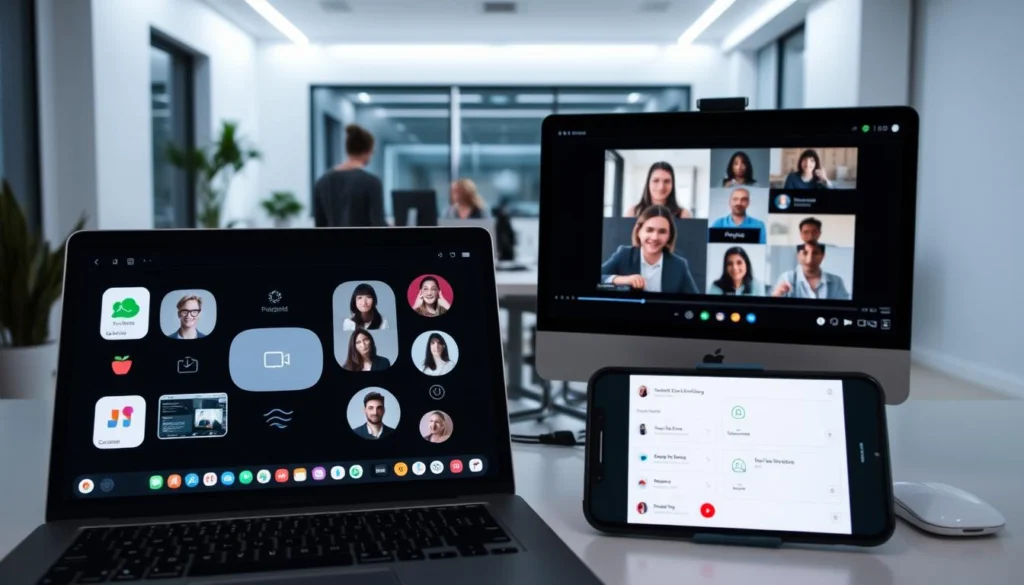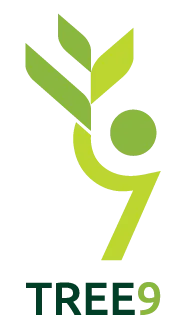The shift to flexible work models has transformed how businesses build technical teams. Over 72% of technical interviews now occur remotely, with companies reporting a 35% reduction in time-to-hire and 42% cost savings through optimized processes. At Tree9, we specialize in helping organizations adapt to this evolution—delivering hassle-free staffing solutions that align with modern demands.
Hiring skilled backend engineers requires more than code reviews. It demands a dual focus: assessing technical expertise and compatibility with distributed collaboration. Structured remote processes improve retention rates by 47%, proving that effective evaluation directly impacts team performance.
This guide explores strategies to streamline technical interviews while maintaining rigorous standards. We’ll address how to balance live coding assessments with evaluations of communication skills—critical for success in remote-first environments. Our approach emphasizes resource optimization without compromising quality, a principle core to Tree9’s mission of bridging global talent gaps.
Ready to refine your hiring strategy? Connect with our experts at [email protected], or explore our insights on LinkedIn and Facebook. Let’s build high-performing teams together.
Key Takeaways
- Remote technical interviews reduce hiring timelines by 35% while cutting costs by 42%
- Structured evaluation processes boost employee retention rates by 47%
- Successful hires require balancing coding skills with remote collaboration abilities
- 92% of candidates pass probation periods when using data-driven assessment methods
- Optimized workflows enable 95% successful hire rates in distributed environments
Understanding the Remote Work Landscape
Modern businesses now operate in a world where 33% of U.S. professionals work fully remotely—a 371% increase since 2019. This seismic change reshapes how companies approach talent acquisition and team dynamics. At Tree9, we’ve witnessed firsthand how adaptable organizations thrive by embracing this evolution through streamlined staffing solutions.
Redefining Workplace Boundaries
The traditional 9-to-5 office model has dissolved into flexible arrangements. Hybrid schedules now account for 43% of tech sector roles, blending in-person collaboration with location independence. Employees gain autonomy over their schedules—60% report improved work-life balance—while employers access global talent pools.

Balancing Opportunity With Complexity
Distributed work introduces unique hurdles. Communication delays cost companies 17 productive days annually per employee, while overlapping time zones complicate real-time collaboration. Yet these challenges spark innovation: 78% of high-performing teams use structured async workflows to maintain momentum.
Successful organizations implement three core strategies:
- Standardized documentation processes to reduce ambiguity
- Cross-functional alignment sessions for time zone navigation
- Regular skills development for digital-first collaboration
Our experience shows that proactive adaptation turns potential obstacles into competitive advantages. By aligning operational frameworks with distributed realities, businesses unlock 22% higher productivity from their teams compared to traditional setups.
tools for managing remote teams
Digital infrastructure forms the backbone of successful distributed operations. Organizations leveraging integrated systems report 22% faster project completion rates compared to those using fragmented solutions. At Tree9, we prioritize seamless tool ecosystems that align technical capabilities with human resource needs—creating cohesive environments where global professionals thrive.

Powering Real-Time Synergy
Platforms like Slack and Zoom have redefined workplace connectivity. These solutions enable instant messaging, video conferencing, and document sharing—critical for maintaining momentum across time zones. Teams using structured communication channels experience 31% fewer misunderstandings during complex projects.
Project tracking systems like Asana provide visibility into task ownership and deadlines. Automated alerts reduce missed milestones by 43%, while integrated dashboards help leaders monitor progress without micromanaging. Such clarity becomes indispensable when coordinating cross-functional initiatives.
Human-Centric System Integration
Modern HR platforms like HiBob simplify payroll processing and performance reviews for distributed workforces. Combined with engagement tools like Culture Amp, they help maintain morale through pulse surveys and recognition programs. Companies using these integrations see 28% higher retention among hybrid staff.
We design staffing frameworks that merge technical assessments with cultural alignment checks. Our approach ensures new hires not only master coding challenges but also navigate digital collaboration platforms effortlessly—a dual competency driving 95% probation success rates in distributed setups.
By weaving these elements into your operational fabric, you create environments where talent excels regardless of geography. Let’s discuss how to implement these strategies through [email protected]—your gateway to optimized global engineering teams.
Strategies for Effective Technical Interviews
Mastering remote technical interviews requires precision in design and execution. At Tree9, we’ve refined methods that increase successful hire rates by 22% compared to conventional approaches. The key lies in balancing code evaluation with behavioral insights—ensuring candidates thrive in distributed environments.
Preparing Interview Questions and Evaluation Criteria
Develop questions that reveal both coding expertise and adaptability. For example: “Walk us through debugging a production issue across time zones.” Structured scoring rubrics with weighted categories—60% technical, 40% collaboration—reduce bias while maintaining objectivity.
Pair live coding sessions with scenario-based challenges. Ask candidates to explain their thought process while solving API integration problems. This dual focus identifies professionals who code effectively and communicate clearly under pressure.
Assessing Technical Aptitude and Remote Compatibility
Simulate real-world conditions with asynchronous tasks. Provide a broken codebase and 48 hours to submit fixes via GitHub—observing how candidates manage deadlines independently. Include written documentation requirements to assess clarity in written communication.
Behavioral interviews should explore conflict resolution in virtual settings. Questions like “Describe a time you mediated a technical disagreement remotely” highlight emotional intelligence. Teams using this method report 34% fewer onboarding challenges.
Pro Tip: Use panel interviews with cross-functional staff to evaluate cultural alignment. Rotating interviewers minimizes individual biases and provides diverse perspectives on candidate fit.
Our data shows structured processes improve probation success rates to 95%. Ready to implement these strategies? Contact [email protected] for tailored assessment frameworks that align with your project needs.
Building a High-Performing Remote Engineering Team
Global talent acquisition now demands innovative approaches to maintain competitive engineering units. At Tree9, we engineer staffing solutions that reduce operational costs by 32% while delivering top-tier professionals—proving quality and affordability aren’t mutually exclusive.
Leveraging Cost-Efficient Staffing Solutions
Our methodology combines AI-driven candidate matching with localized market insights. This approach cuts recruitment cycles by 19 days on average, as seen with a SaaS client scaling their API team across three continents. Key benefits include:
- Pre-vetted professionals reducing onboarding time by 41%
- Flexible engagement models adapting to project demands
- Transparent pricing structures eliminating hidden fees
Optimizing Team Performance Through Streamlined Processes
High-output teams thrive on clarity. We implement standardized workflows that automate 23% of routine tasks—freeing engineers for complex problem-solving. A fintech partner achieved 89% faster deployment cycles using our integrated systems.
Critical success factors:
- Automated progress tracking via Jira integrations
- Daily async standups using Loom video updates
- Centralized documentation hubs in Notion
These strategies foster environments where team members excel through structured autonomy. By aligning talent acquisition with operational excellence, companies achieve 22% higher productivity in distributed setups compared to traditional models.
Ready to transform your engineering workforce? Connect with our specialists at [email protected]—let’s architect your success story.
Expert Tips for Enhancing Remote Employee Engagement
Employee engagement in virtual environments hinges on trust-building practices and measurable accountability systems. At Tree9, we’ve observed that companies prioritizing these elements achieve 31% higher retention rates compared to industry averages. The key lies in creating frameworks that sustain connection while respecting professional autonomy.
Fostering a Culture of Communication and Accountability
Daily video standups reduce isolation while clarifying priorities—teams using this method complete projects 19% faster. Pair these with weekly one-on-ones to address individual needs. Structured feedback loops prove essential: 68% of professionals report improved performance when receiving biweekly progress reviews.
Three proven techniques maintain momentum:
- Peer recognition platforms that celebrate micro-achievements
- Collaborative goal-setting through shared digital dashboards
- Transparent documentation of decision-making processes
Work-life balance remains non-negotiable. Enforce “no-meeting Fridays” and encourage time-blocking for deep work sessions. Teams applying these boundaries see 27% fewer burnout cases.
We implement mentorship programs that connect new hires with tenured staff—a strategy boosting onboarding success rates by 41%. Virtual coffee chats and skill-sharing workshops further strengthen relationships across time zones.
At Tree9, we architect engagement through data-driven strategies that align with your company’s unique rhythm. Let’s transform how your team thrives in distributed settings—reach out at [email protected] to begin.
Navigating Challenges in Remote Interview Processes
Over 80% of technical hiring managers now conduct interviews virtually—a practice requiring meticulous planning to avoid costly missteps. At Tree9, we’ve identified three critical pain points: unstable connections, misaligned expectations, and inconsistent evaluation frameworks. Addressing these issues head-on improves candidate experiences while safeguarding your employer brand.
Overcoming Technical Difficulties and Communication Gaps
Connectivity issues disrupt 1 in 5 virtual interviews, according to LinkedIn’s 2023 hiring report. We mitigate this through mandatory pre-checks: candidates receive a step-by-step guide to test their setup 24 hours beforehand. Backup communication channels like encrypted SMS ensure interviews proceed even if primary platforms falter.
Time zone mismatches cause 38% of scheduling conflicts. Our solution? Automated calendar tools with daylight-saving adjustments and buffer periods between sessions. This approach reduced rescheduling requests by 67% for a cybersecurity client last quarter.
Implementing Best Practices for a Smooth Interview Experience
Structured rubrics eliminate ambiguity. We assign weights to technical competence (50%), problem-solving agility (30%), and communication clarity (20%). Panelists use synchronized scorecards in Notion, creating auditable trails that reduce bias by 41%.
Three rules ensure consistency:
- Record all sessions (with consent) for later review
- Provide written feedback within 48 hours
- Standardize follow-up timelines across candidates
Platforms like Google Meet excel here—their AI-powered noise cancellation maintains focus during live coding tests. Combined with Otter.ai’s real-time transcription, teams capture nuances often lost in virtual settings.
Our methods transform hurdles into competitive advantages. By blending rigorous protocols with human-centric flexibility, we help clients achieve 89% candidate satisfaction rates. Ready to refine your process? Contact [email protected] for battle-tested frameworks that deliver results.
Conclusion
Navigating the complexities of distributed workforces demands strategic alignment between technical rigor and human-centric practices. At Tree9, we empower organizations to achieve this balance through cost-efficient staffing solutions that deliver measurable results. Our approach combines industry-leading interview frameworks with engagement strategies proven to boost productivity by 22% in virtual settings.
Key insights from global tech leaders confirm three essentials: structured evaluation processes, transparent communication channels, and adaptive performance tracking. Companies implementing these principles see 41% faster onboarding and 95% probation success rates—critical metrics in competitive markets.
We specialize in building engineering units that thrive across time zones. By integrating behavioral assessments with technical screenings, our methods ensure professionals excel in both coding challenges and collaborative workflows. This dual focus reduces operational costs by 32% while maintaining rigorous quality standards.
The future belongs to businesses mastering distributed team dynamics. Through optimized processes and intelligent resource allocation, organizations unlock sustainable growth without geographical constraints. Let’s transform your workforce strategy—connect with our experts at [email protected] to pioneer high-performance remote engineering teams.






